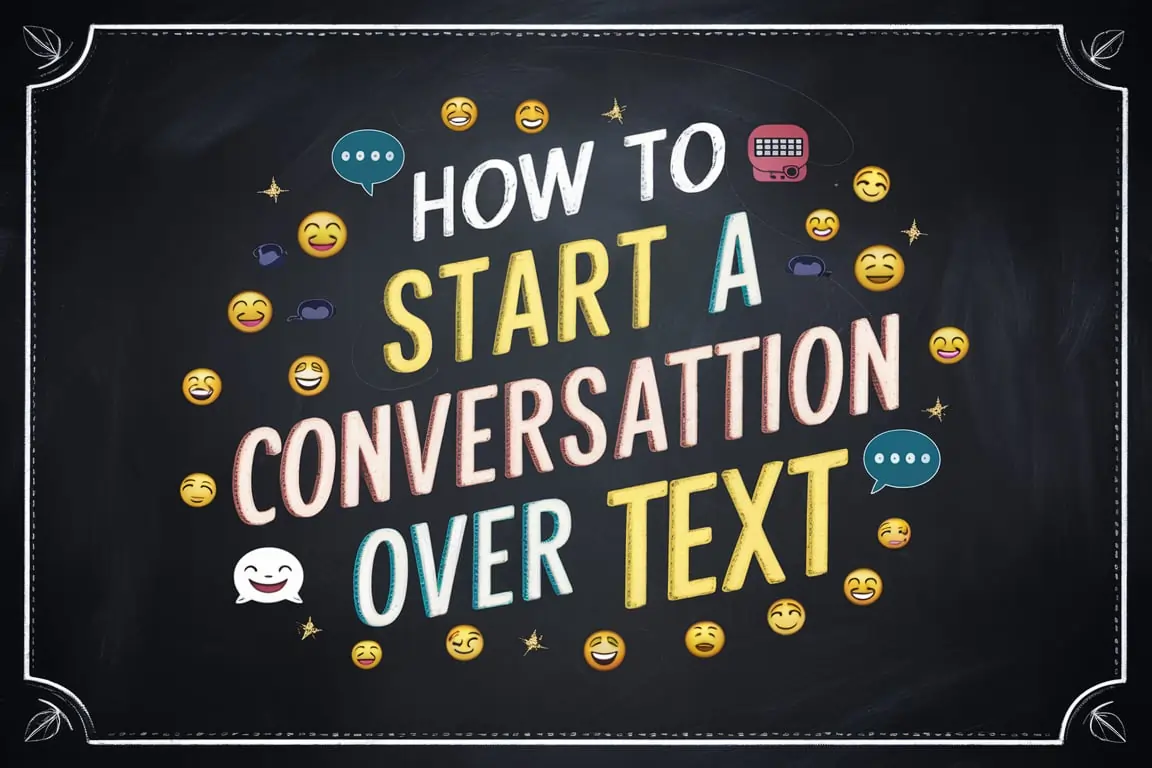5 Great Ways to Start Conversation in a Group

OK, if we are being honest here, introducing yourself to any group of strangers can be really quite nerve-racking. You walk in that door, and suddenly you find yourself in the middle of a crowd of hardly known faces. How could that silence be so awkward? How come the pressure is real? Well, now, don’t worry. I’ve got a few tricks up my sleeve to help you turn that awkward silence into a buzzing conversation.
Now, I’m not saying you’ll magically turn into the life of the party from one day to another. But with a few simple strategies, you’ll start conversations that people actually want to be a part of. Sound good? Let’s get into it.
1. Get Everyone Involved
First things first—no one likes feeling left out. If you’re in a group where people don’t know each other, introductions are a must. Think of it as setting the stage for the conversation. They don’t want to have people sitting around thinking, “Am I supposed to be here?”
So, what do you do? You pull everybody in. Let’s say you’re at a get-together, and you see a couple of people looking a little out of place. You might just dive in with, “Hey everybody, this is Jane. She’s just moved here and is already tackling all the best coffee shops. And this is Tom, who knows all the secret places in town.” Just like that, you’ve introduced them to each other and they’re not strangers.
But don’t stop there. Keep things rolling by connecting people to the conversation. If, for example, you’re talking about traveling, you might say, “Tom, didn’t you just get back from Japan? Jane, you’ve been dying to go there forever, haven’t you?” Get it? Now, not only are they involved, but they’re also engaged with each other.
2. Choose a Topic Everyone Can Relate To
Okay, now that everyone’s introduced, you’ve got to keep things rolling. How? By choosing a topic that everyone can jump in on. This is crucial. You don’t want to dive into something so niche that people start checking their phones out of sheer boredom.
Take something general and broad in which most everyone would be able to relate. It could be the hottest new show on Netflix that is going around, or a current event that most people have taken a hit from in their news feed. You might say, “So, did anyone else get hooked on that new show? I swear, I lost my whole weekend to it.” Boom. Everyone is sharing about their guilty pleasure shows.
Or perhaps you refer to something that happened within seconds ago, like the weather. I know, it seems so boring, but do believe me, it works. “Did anyone else get caught in that downpour on the way here? I’m still drying off!” It’s relatable, it’s current, and it’s an easy way to get people talking.
3. Don’t Turn the Conversation into an Interrogation
Now, let’s talk about the question drill. You know what I mean—question, question, question; it feels like an interrogation. Not fun, right?
The deal is this: nobody likes feeling like they are under interrogation. If you are asking questions only to one person, the heat is going to get turned up on them, and not in a good way. Instead, spread the love. No, if you’re talking about hobbies, don’t interrogate one person over the minute detail of their weekend. Open it up. “I’m curious. What’s everybody into these days?” Now you’re talking to everybody.
And let’s face it, those questions which are closed and need only a yes or no answer? Well, they kill a conversation. Go for something more like this instead. Instead of asking, “Did you like the restaurant?” ask, “What was your favorite dish there?” Now, you’ve got a conversation that can actually go somewhere.
4..Break the Ice with a Little Humor or a Story
Alright, let’s address the elephant in the room—awkward silences. We’ve all been there. The group goes quiet, and everyone’s just waiting for someone, anyone, to say something. And that is where you step in.
One of the best ways to break the ice is humor. A good light joke can do marvels. You don’t really have to be a stand-up, but just something so simple that can get the people smiling. Maybe something like, “I’ve officially hit that age where I need a nap to recover from my nap—anyone else feel me?” It’s relatable, it’s funny, and it gets people talking.
If you’re not much of a joker, then try to tell a story. We all love a great story. It doesn’t have to be anything epic—just something interesting or funny that happened lately. “You won’t believe what happened to me on the way here.” Then let them jump in with their own stories. That’s an easy way to relate to someone and get a conversation going.

5. Open-Ended Questions for Further Conversation
Now that you’ve got the conversation started, you want to keep it going, right? That’s where open-ended questions come in. These are the questions that do not require a “yes” or “no” answer. They require more thought and generally lead to some interesting discussions.
Instead of asking, “Did you have a good weekend? Such as, “So, what did you do over the weekend?” This might elicit more from the other person, and gosh, maybe one thing will lead to another and you have a new topic.
The beauty of open-ended questions is how freely they make the conversation flow; you never force anything out, but people are just pushed subtly to keep sharing. And before you know it, the conversation is off and running.
Putting It All Together
So, you’ve got your introductions, you’ve chosen a relatable topic, and you’re keeping things rolling with open-ended questions and a bit of humor. Sounds like you’re all set, right? Well, here’s the thing—you don’t have to do all of this at once. Sometimes, just one or two of these strategies will do the trick.
The key is to be adaptable. Feel out the situation and decide what’s most appropriate. Maybe the group is already warmed up, and all you need to do is throw out a good topic. Or maybe it’s a bit stiff, and you need to break the ice with a joke or a story. Whatever the case, these strategies give you the tools you need to handle whatever comes your way.
Experiment and Find What Works for You
Here’s the truth: the more you practice these techniques, the better you’ll get at them. You’ll start to see which ones work best for you. Maybe you’re a natural at connecting people or great at telling stories. Whatever your strength is, lean into it, and don’t be afraid to experiment. Try different approaches in different situations, and see what feels right. The more you do it, the more comfortable you become, and pretty soon, you’ll find starting a conversation isn’t something you dread; it’s something you look forward to.
So, next time you’re in a group and the conversation goes flat, remember these tips. Take a deep breath, pick your strategy, and get the conversation started. You’ve got this!







